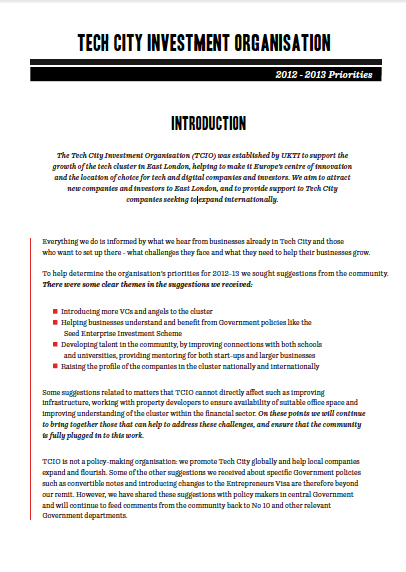Anil Hansjee, who recently departed Google to set up a new VC fund in Tech City, has been kind enough to write a short Friday guest blog for us, outlining his 5 Top Tips for start-ups looking for early stage funding. Read on for Anil’s thoughts and insights into how best to get on the funding ladder early…:
1) Have the right team
Know what you are – and are not – good at. Know who you want to plug the gaps – whether it’s new team members or advisors: have a short list, follow them, court them, know what it will take to get them.
Demonstrate why you’re the right team – for example, how long have you known and worked together; how do you complement each other.
2) Know your product
Design and usability are crucial in consumer products. Experiment and fine-tune – understand what product changes make what difference to metrics.
Use ROI based online marketing techniques and demonstrate what works or not and why. Show what you think you can do with money to improve product/expand traction.
Know your KPIs and why they are important: demonstrate metrics, analytics and improvements along a path and know where more money will take you.
3) Understand the potential
Understand how you have used your money so far: where it’s been well spent and where it’s been wasted. Think about your future needs in a detailed cash flow usage over the next 2 yrs.
Use benchmarks to show your figures are market. Don’t waste time predicting revenues but do have a sense of market opportunity/size and think about business models that investors know and understand and can apply to you.
Know why you are giving something up for free (if you are) – what orthogonal business model or purpose do you have. Think about the path to steady monthly sources of incoming cash flow as a basis if possible.
4) Get the business model right
Explain how you build win:win relationships with customers and or consumers to create protective hurdles in your business models and dependencies of your customers on you.
Understand the competitive dynamics – both similar and different stories to yours. What you are changing or what you are leveraging (if it already works well) from others.
Is this disruption or incremental innovation? Plan for the appropriate success criteria appropriately ie not underestimating the time it takes to change certain habits or change established ecosystems.
5) Find the best funding for you
Be selective about who you approach for funding – make sure it’s the right fit in terms of culture, experience success and personal dynamic … after all, this is a long term relationship. Focus on the individual not the firm initially.
Be bold in approaching VCs – network, go to events, ask for personal intros. Demonstrate you are a good entrepreneur in getting that meeting.
Practise the elevator pitch – time is of the essence to capture the interest for a real meeting. Listen to other startups pitching at events so you can pick up constructive learning on what to improve yourselves.
So, those were Anil’s tips – what do you think? Are there any others that you’d like to suggest? Let us know in the comments or on Twitter!







Like Duncan Bannatyne my mantra is “Know your Customer” – first, last and always!
Technology businesses often take a product-oriented view of their business proposition. They have a mistaken belief that a product proposition that is slightly superior to currently available solutions will be sufficient to generate customer value and generate company growth. They often fail to understand that product-based innovations are often replicable by incumbent players and can therefore be made obsolete in a relatively short period of time.
Often the real opportunity is to greatly enhance the value of their business proposition by introducing novel business models. Whilst they are often enabled by a technology innovation, novel business models are much harder to replicate by incumbent players as it can entail fundamental change to the way that they do business.